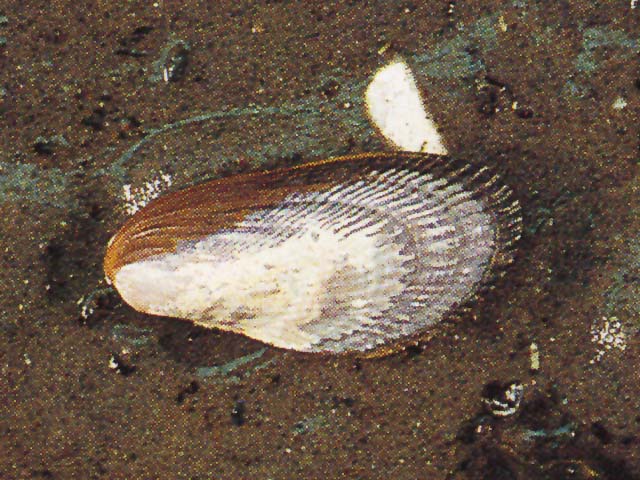| Mytilidae (sea mussels) |
| 12 cm TL (male/unsexed) |
|
benthic; brackish; marine; depth range 0 - 20 m |
| Western Atlantic and Eastern Pacific. |
|
|
| Western Central Atlantic; Northwest Atlantic: Canada to northeastern Florida; Gulf of Mexico; introduced to California. 8 cm, total length. It lives attached to hard substrates intertidally or at shallow subtidal depths. Diagnostic features: Shell mussel-shaped, thin but strong. Shell margins crenulated. Sculpture of strong, numerous, bifurcating radial ribs, weaker on anteroventral area. Hinge teeth absent. Colour: externally variable, usually yellowish brown, greenish brown, or dark brown, internally bluish white with posterior end (rounded area) purplish (Ref. 271). Maximum depth range based on its ecology; to be replaced with a better reference. It is a key bivalve species mainly found in salt marshes (Refs. 123486, 126240). It lives attached to hard substrates intertidally or at shallow subtidal depths (Ref. 271). It has mutualistic relationship with cordgrass Spartina alterniflora (Ref. 126240). |
|
Not Evaluated (N.E.) Ref. 123251)
|
|
|
Source and more info: www.sealifebase.org. For personal, classroom, and other internal use only. Not for publication.

